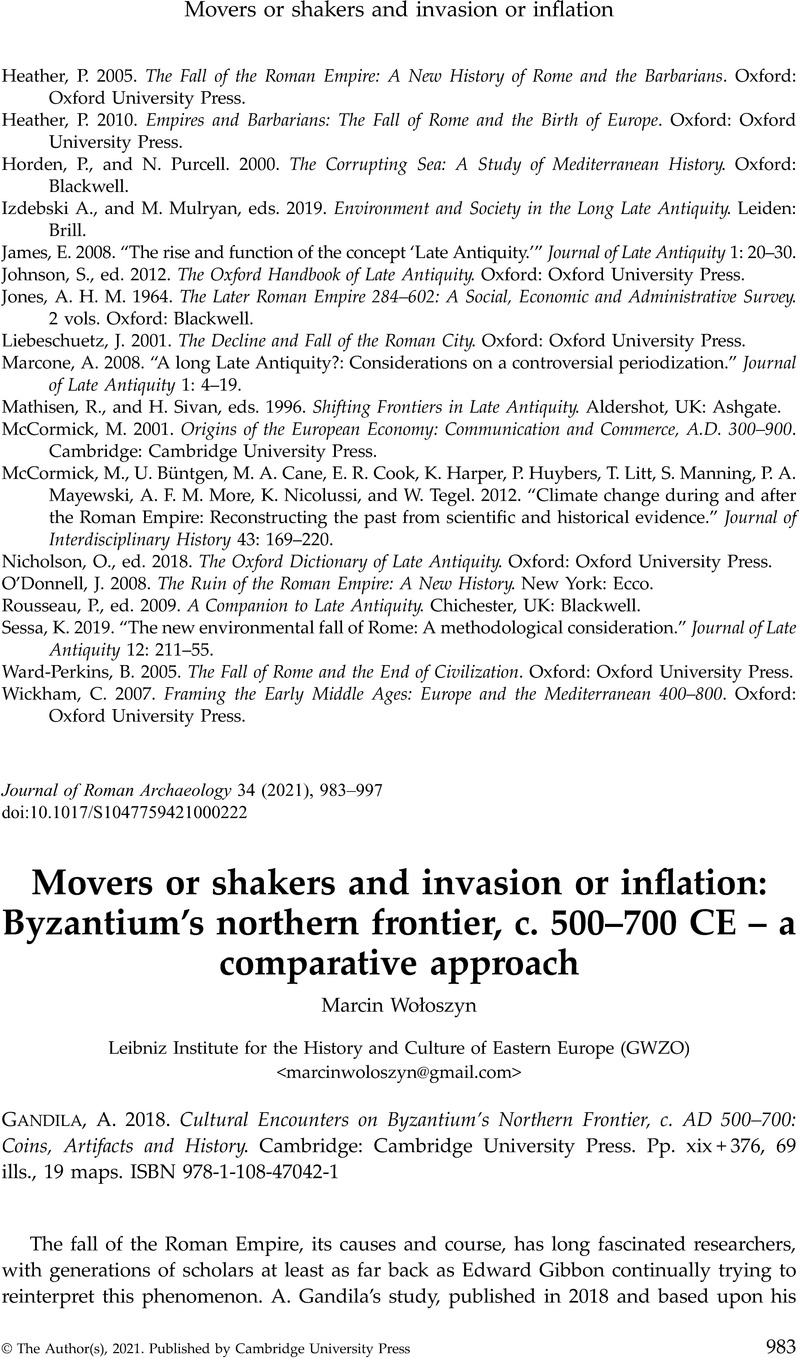Bursche, A. 2001. “
Roman gold medallions as power symbols of the Germanic élite.” In
Roman Gold and the Development of the Early Germanic Kingdoms: Aspects of Technical, Socio-Political, Socio-Economic, Artistic and Intellectual Development, A.D. 1–550. Symposium in Stockholm, 14–16 November 1997, ed.
Magnus, B.,
83–
102. Konferenser (Kungliga Vitterhets, Historie och Antikvitets Akademien) 51.
Stockholm:
Almqvist & Wiksell.
Google Scholar 